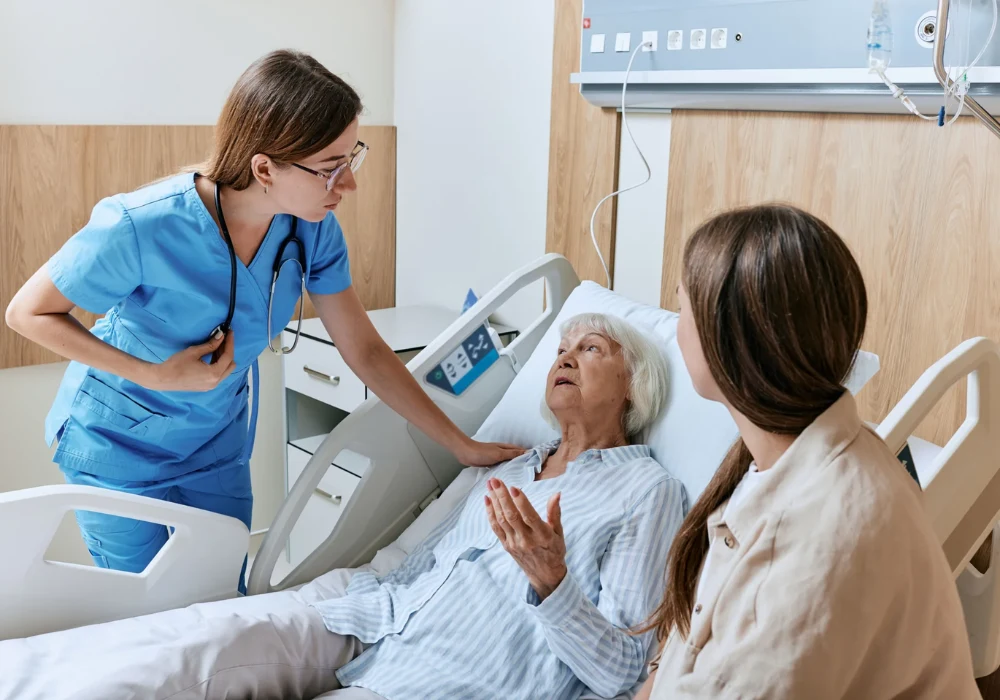Families who support a loved one through an intensive care unit (ICU) admission often live with lasting worry, disrupted routines and difficult memories. The impact can include intrusive thoughts, low mood and a general loss of confidence that persists long after discharge. A structured approach to follow-up, delivered by ICU nurses, set out to change this. The Caregiver Pathway is a four-step model that begins shortly after admission and continues for months, adapting to individual needs and local resources. In a randomised comparison with usual care, it was linked with fewer signs of post-traumatic stress at six months, a continued favourable trend at twelve months and particularly clear gains among caregivers of patients who survived the ICU stay. These results offer a practical template for services keen to strengthen family support around critical illness.
Structured Support from ICU to Home
The Caregiver Pathway is designed to be simple, timely and flexible. It starts in the first days after ICU admission with a brief digital check-in and a conversation that brings forward worries, preferences and practical needs. This helps staff tailor support from the outset rather than relying on ad hoc encounters. As the hospital stay ends, caregivers receive a supportive card that summarises key points and signposts help. A few days later, a message and optional phone call provide space to clarify information and surface unresolved concerns once the initial rush of discharge settles. Within three months, a longer conversation offers time to reflect on the experience and to plan next steps, a physician involved in the admission may join when helpful. The model deliberately adapts to circumstances: for example, early steps can be adjusted if the patient is close to death, and post-discharge contacts are not offered to bereaved caregivers.
Must Read: Retaining the Next Generation of Caregivers
Nurses lead the approach after focused training and ongoing support. Conversations follow communication principles that validate emotion, invite questions and centre the caregiver’s perspective. The structure ensures continuity from ICU through the transition home, while the tailored format respects that family needs vary across time. When appropriate, staff can direct caregivers to local or national resources and escalate to psychological or psychiatric services if more specialised help is warranted. In routine practice, several caregivers connected with a physician in addition to the nurse-led steps, illustrating the model’s capacity to bring the team together around the family’s needs.
Sustained Benefits for Caregivers of Survivors
Outcomes were tracked over a year using recognised measures of trauma symptoms, mood, functioning, hope and self-efficacy. Across both groups, distress tended to lessen with time, yet the pathway was associated with a clearer easing of post-traumatic stress at six months and a maintained advantage by twelve months. While overall differences in anxiety, depression and quality of life were modest, the direction of effect generally favoured the pathway and there were signs of increased confidence in managing daily challenges.
The most consistent benefits were seen among caregivers of patients who survived the ICU stay. In this subgroup, post-traumatic stress was meaningfully lower at both follow-up points, and anxiety also eased. Elements of quality of life and hope improved at different times in the year, suggesting that the combination of early needs assessment, structured information, timely contact and a reflective follow-up conversation can stabilise emotional recovery as families adjust to life after critical illness. These longer-term patterns extend earlier findings at three months, when caregivers in the pathway also reported fewer distress symptoms and better physical functioning. Taken together, the results point to a durable effect where the patient survives, with the pathway acting as a steadying thread across an otherwise fragmented period.
Considerations for Bereavement and Implementation
Bereaved caregivers did not experience measurable benefit from the pathway. Their distress remained high, indicating that grief-related needs likely exceed what a brief, stepped, nurse-led model can provide. This underscores the importance of clear routes to specialised bereavement support and flexible escalation when signs of persistent or severe distress appear. The pathway includes signposting and referral options, but bereavement care may require different timing, intensity and expertise than follow-up for families whose loved one survives.
Introducing the pathway raises practical questions for ICU teams. It depends on trained nurses who have protected time to assess needs, hold conversations and coordinate follow-up. That may be challenging in units where staffing is tight and burnout is common. In the trial setting, nurses who delivered the pathway also contributed to usual care, and usual care varied by clinician. Such overlap is common in real-world practice and can blur differences between groups, yet the pathway still showed added value. For organisations considering adoption, the structured steps, brief digital assessment and clear decision points offer a workable template that can be integrated into existing family support processes. Success will hinge on leadership support, manageable workloads and access to allied clinicians for escalation when complexity arises.
A nurse-delivered, four-step caregiver pathway that spans admission to the months after discharge was associated with fewer post-traumatic stress symptoms at six months and a sustained advantage by twelve months, with the strongest gains among caregivers of ICU survivors. Bereaved families did not benefit, signalling a need for more intensive bereavement pathways alongside general follow-up. For ICU teams, the model provides a pragmatic structure for consistent, compassionate support that can be tailored to individual needs while creating predictable touchpoints across the recovery journey. Implemented with adequate staffing and clear escalation routes, it offers a feasible route to reduce lingering distress and improve the experience of families living through critical illness.
Source: Intensive Care Medicine
Image Credit: iStock






